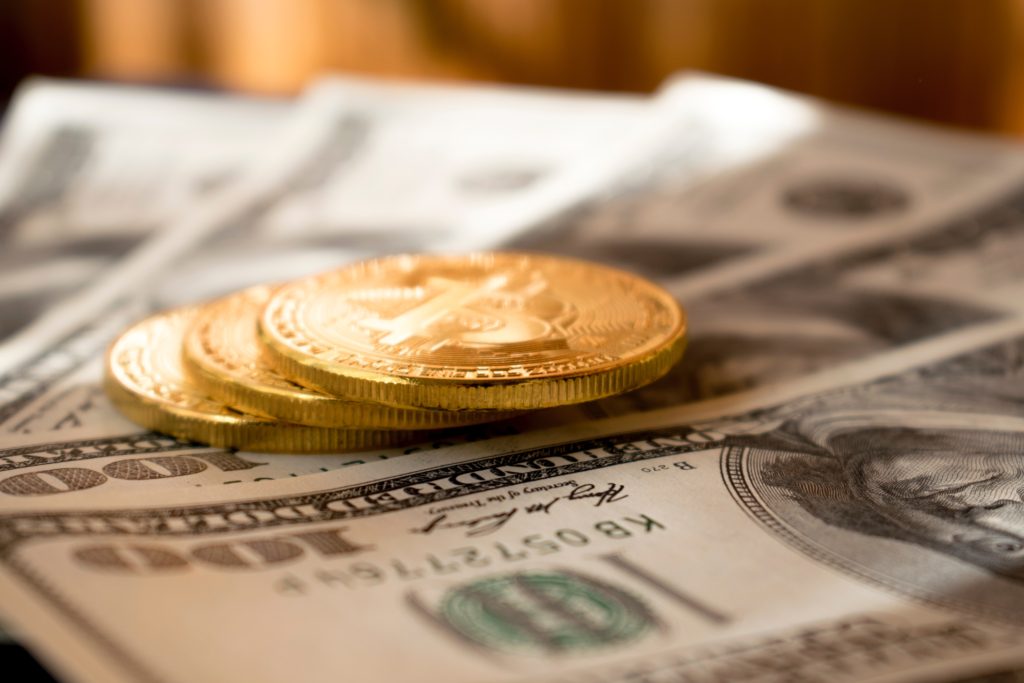
When you take out any type of loan, an interest rate will be attached to it by the lender. These rates can either be variable or fixed. If your interest rate is fixed, it will remain the same as you repay the loan. Variable rates can either go up or down after an initial fixed period. When you’re buying a home, the interest rate you receive can be the difference between being able to afford your dream home and needing to make some sacrifices when you eventually make an offer.
Let’s say that you’re set to make an offer on a $400,000 home. If you qualify for a 5% fixed interest rate on a 30-year loan with a 20% down payment, you’ll pay nearly $300,000 in interest over the course of the loan. If, however, an 8% interest rate is attached to the mortgage, you’ll end up paying over $525,000 in interest.
While banks and other lenders set their own interest rates, they do so under guidance by the Federal Reserve. Soon after the COVID-19 pandemic started, the Fed dropped interest rates to a target range of zero to 0.25% to ensure that the economy didn’t collapse while businesses were closed. Soon after, buyers flooded the real estate market in search of their next home.
In early 2022, the Fed was forced to start increasing rates at a faster pace to combat inflation. They have since performed around 10 consecutive rate hikes, which has resulted in an average interest rate of 6.41% on 30-year mortgages. Buyers are now wondering when interest rates will start dropping. This article takes a closer look at when the anticipated drop should occur.
Current Economic Conditions and Monetary Policy
An important factor that dictates what happens with interest rates is the state of the economy. When the economy is doing poorly and people aren’t buying as much, the Federal Reserve may choose to lower interest rates. These rates usually remain low if inflation is also at a reasonable rate.
On the other hand, high consumer spending oftentimes results in companies choosing to increase product prices, which leads to higher inflation. The Federal Reserve raises interest rates in an attempt to dampen consumer spending and reduce inflation. Keep in mind that the Federal Reserve is the central bank for the U.S. and is directly responsible for setting monetary policy.
Along with inflation, interest rates are also impacted by GDP growth and unemployment numbers. When unemployment levels are high, the Fed might be motivated to drop rates in order to give a boost to economic growth. Lower unemployment rates effectively do the opposite. As for GDP growth, an increase in the gross domestic product (GDP) usually means that the economy is performing well and that interest rates are relatively low.

Central Bank Actions and Interest Rate Changes
Central banks like the Federal Reserve use a country’s monetary policy to react to economic fluctuations while also obtaining price stability. The prices for goods are stable when inflation is low. It’s common for central banks to set specific inflation targets.
Monetary policy is conducted by altering the supply of money. In most cases, this involves purchasing and selling securities across the open market. These operations result in changes to short-term interest rates, which also impact long-term rates.
If a central bank drops interest rates, their monetary policy softens. When interest rates increase, their monetary policy tightens. As mentioned before, central banks typically increase interest rates when unemployment numbers are low and inflation is high. Interest rates tend to drop when inflation is low.
Global Economic Factors and Interest Rates
There are many global factors that influence interest rates as well, the primary of which is when certain events cause the price of items to increase rapidly. For instance, the war between Russia and Ukraine is one reason why oil and food costs have risen significantly. Depending on where the U.S. obtains some of its food or resources, events that occur in that location can influence interest rates in the country.
In many scenarios, the Fed’s monetary policy is similar to the monetary policy held across many advanced countries across the world. The Federal Reserve isn’t the only central bank that’s currently increasing interest rates to fight inflation.

Government Policies and Interest Rates
Government policies can directly affect what happens with interest rates. It’s possible for the government to use fiscal stimulus in an attempt to boost economic activity through higher government spending or less tax revenue. When the government spends more, economic activity usually increases by having customers buy more. The Government can also transfer funds directly to the consumer.
If people have more disposable income, they usually buy more services and goods. When the government sent out stimulus checks during the COVID-19 pandemic, customers bought more goods with the money they received. This strategy is referred to as expansionary fiscal policy. If the economy is in a recession, this type of fiscal policy can be highly advantageous. However, it also results in higher interest rates and trade deficits.
Interest rates are also impacted by changes in tax policy. In most cases, tax cuts result in higher interest rates. If taxes are relatively low, individuals and businesses alike keep more money in their pockets, which pushes them to spend more on goods. Higher demand causes companies to charge higher prices, which leads to inflation and higher interest rates. In times of political instability, interest rates sometimes drop in the event that consumers aren’t spending as much because of the uncertainty.
Market Forces and Interest Rate Movements
The main market forces that drive interest rates involve supply and demand, which is most evident in the bond market. Bonds are securities that are often issued by the government to borrowers. The person who buys the bond will receive future cash flows via interest payments. Bonds have a level of interest rate risk that buyers must take into account. When interest rates increase, bond prices fall. This usually occurs when supply and demand increase.
Inflation and the potential for future inflation can result in changes to interest rates. Supply and demand determine pricing for long-term bonds, which is what leads to changes in long-term interest rates. In the event that the bond market finds the Federal Reserve rate to be too low, it will expect inflation to increase in the future, which means that interest rates will also rise. When the market believes that the fed funds rate is higher than it should be, long-term interest rates decrease in comparison to short-term rates. In this scenario, the yield curve will flatten.
There are two types of risk that investors take on when they choose to invest in bonds, which include credit risk and interest rate risk. Interest rate risk involves the risk that a bond’s price will change because of interest rates rising or falling. Credit risk is a risk that the bond’s issuer won’t make the interest payments they owe. U.S. Treasury bonds are free of default risk.

Predicting Future Interest Rate Movements
To predict if interest rates will rise or fall in the future, it’s important to understand the many factors that influence interest rates. It’s widely believed that interest rates will decrease as inflation begins to ease. However, there are some challenges of forecasting interest rate changes based primarily on inflation. Even if the Federal Reserve notices that inflation is dropping, they may still increase rates in an attempt to have inflation drop even further.
If you want to make accurate predictions about interest rates, it’s highly recommended that you follow key market indicators pertaining to these rates. For instance, if the government chooses to increase tax rates or reduce government spending, this is considered contractionary fiscal policy. In this situation, consumer demand would likely drop and cause inflation and interest rates to decrease as well. The other factors that you should consider monitoring include everything from global economic events to Federal Reserve actions.
Conclusion
Inflation is the primary reason that interest rates increase or decrease. However, inflation itself is caused by consumer spending. When demand is high and supply is low, prices go up, which usually leads to the Federal Reserve increasing interest rates in an attempt to balance inflation. Fiscal policy and tax policy can also determine if interest rates start to go up or begin to fall.
Since any of these factors can result in significant changes to interest rates, it’s highly recommended that you remain informed about policy decisions and economic conditions. The best way to identify what’s going on with interest rates is to follow news about the Federal Reserve. The Federal Open Market Committee (FOMC) that’s part of the Federal Reserve meets eight times each year to decide if they will increase or drop interest rates.
Many economists believe that interest rates will start to drop in 2023. Recent data indicates that inflation is easing, which has caused the Federal Reserve to temporarily pause rate hikes. If additional signs of lower inflation occur in the coming months, there’s a good chance that interest rates will fall. Once this happens, it will be more affordable for you to purchase a home. Even though you’ll likely need to contend with high home values, low interest rates that you can afford a higher-priced home.